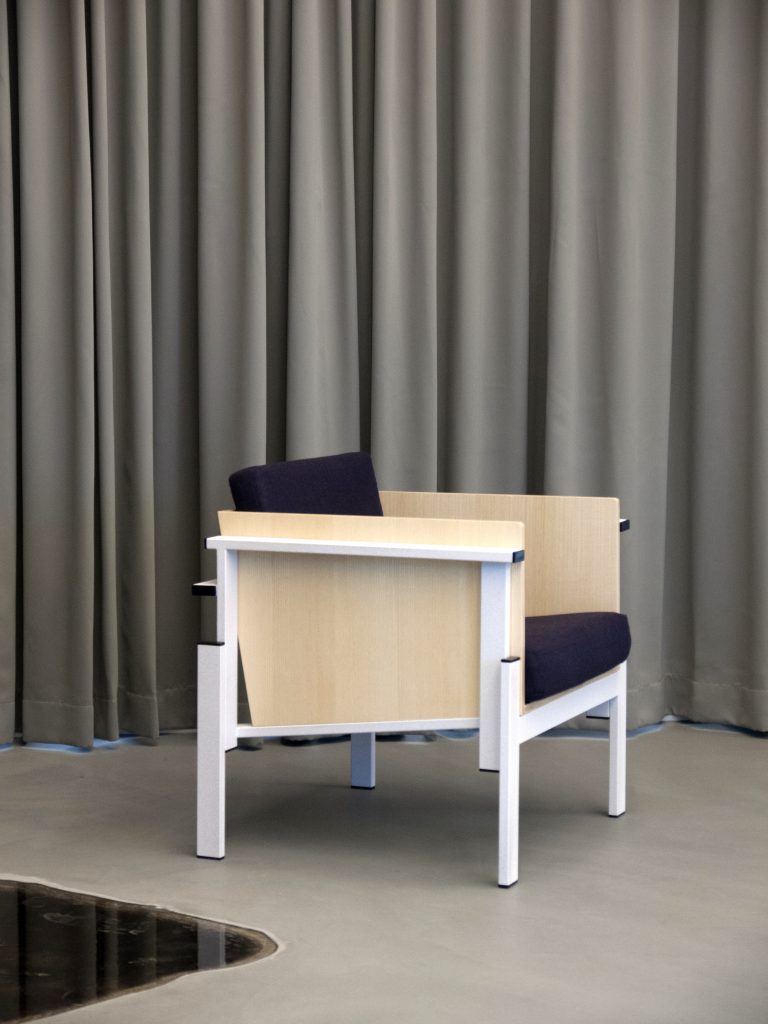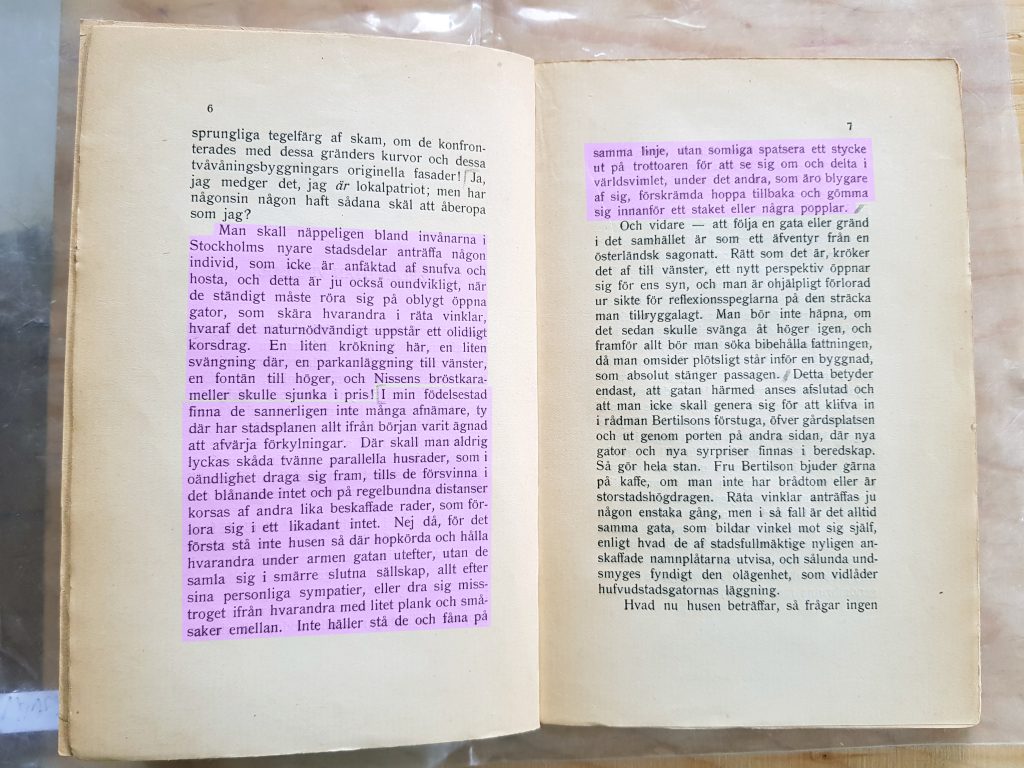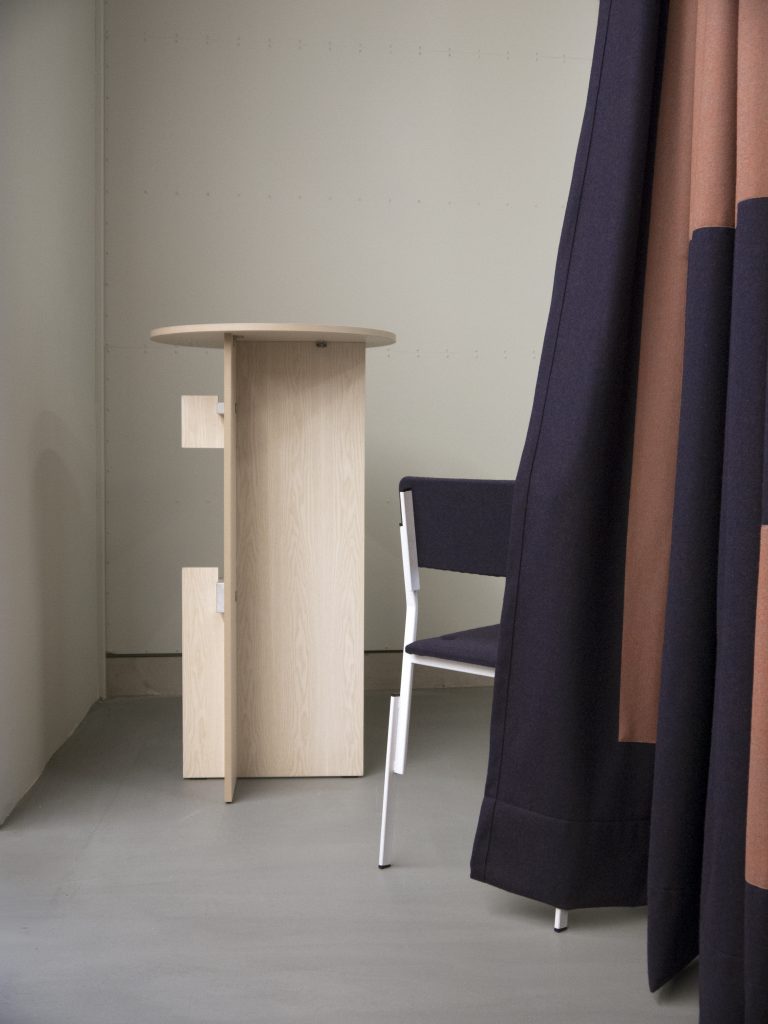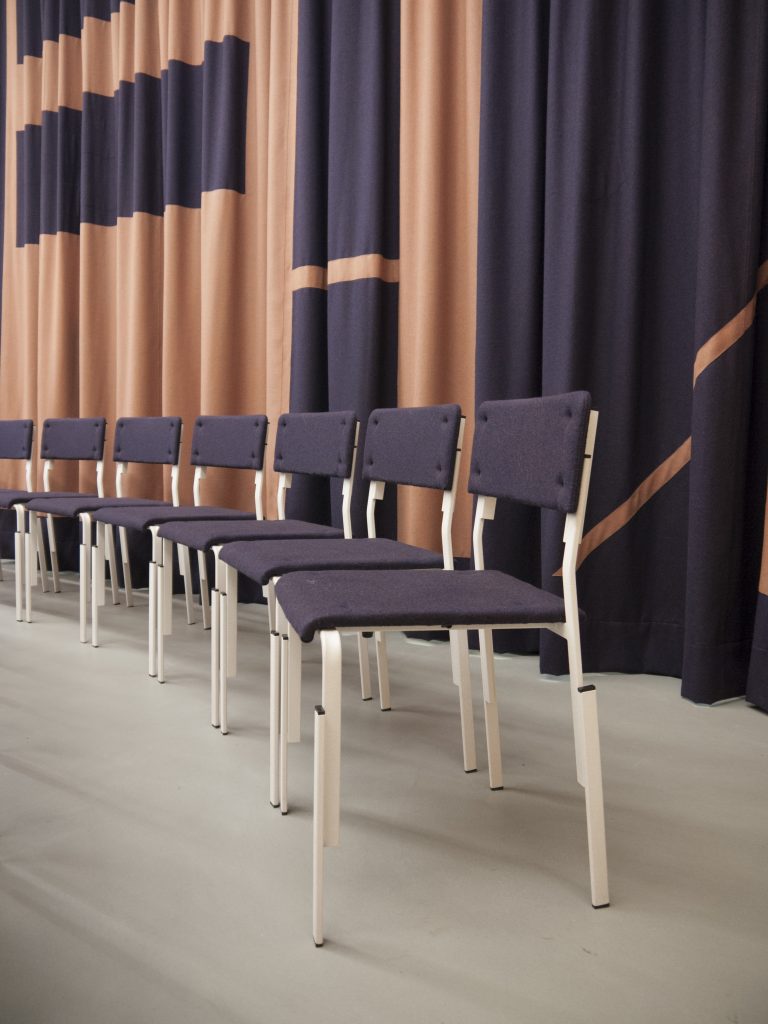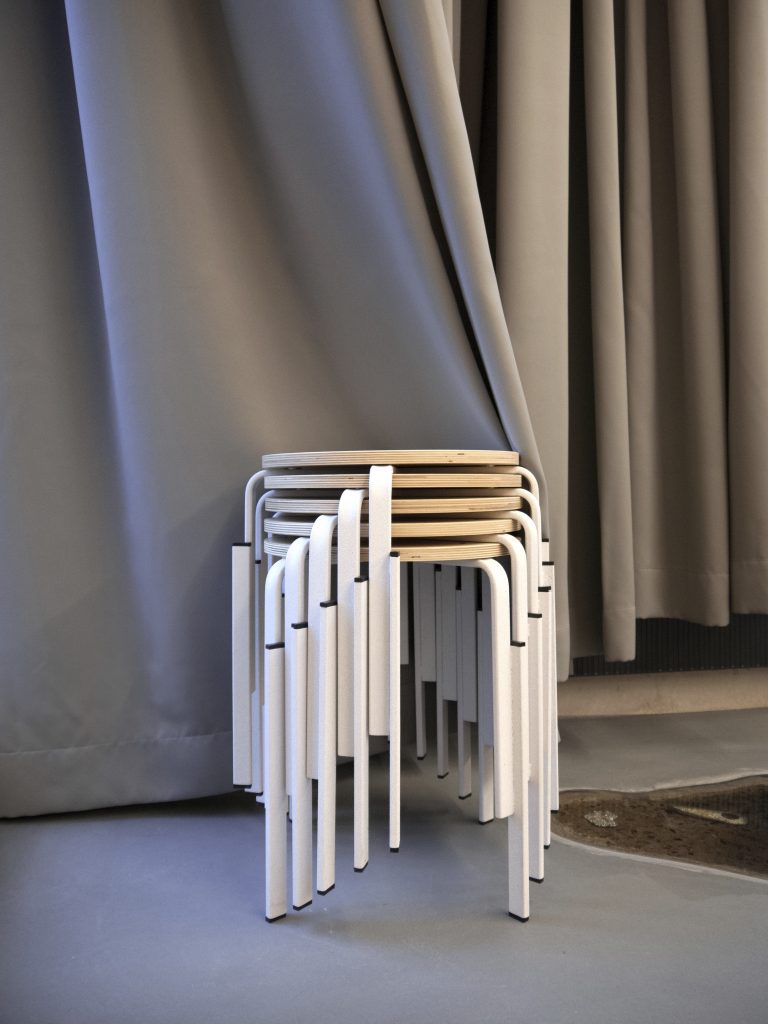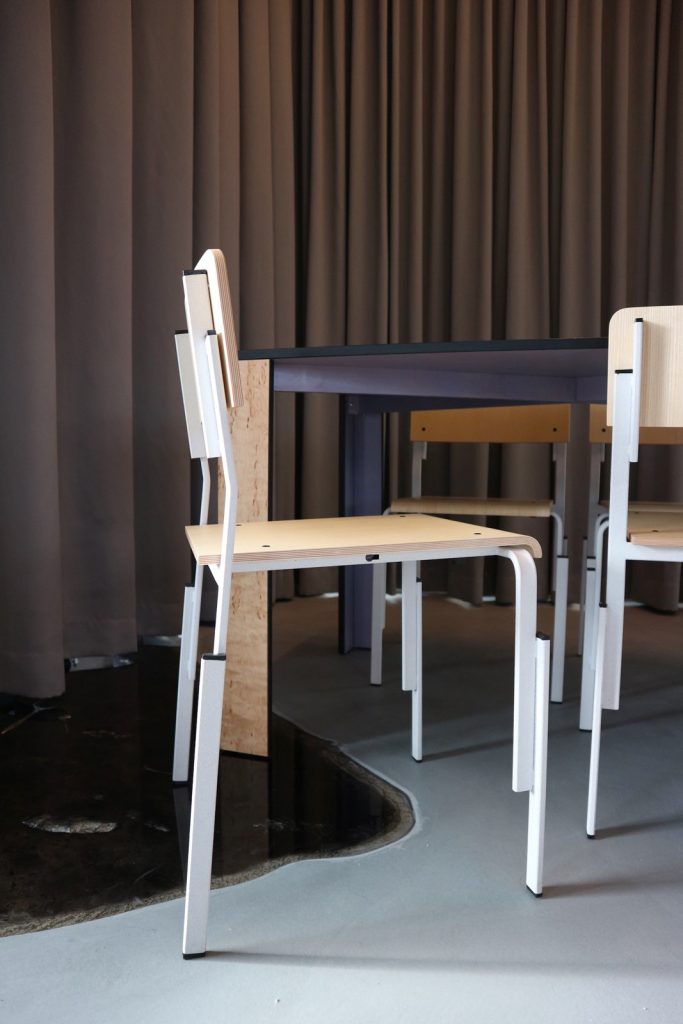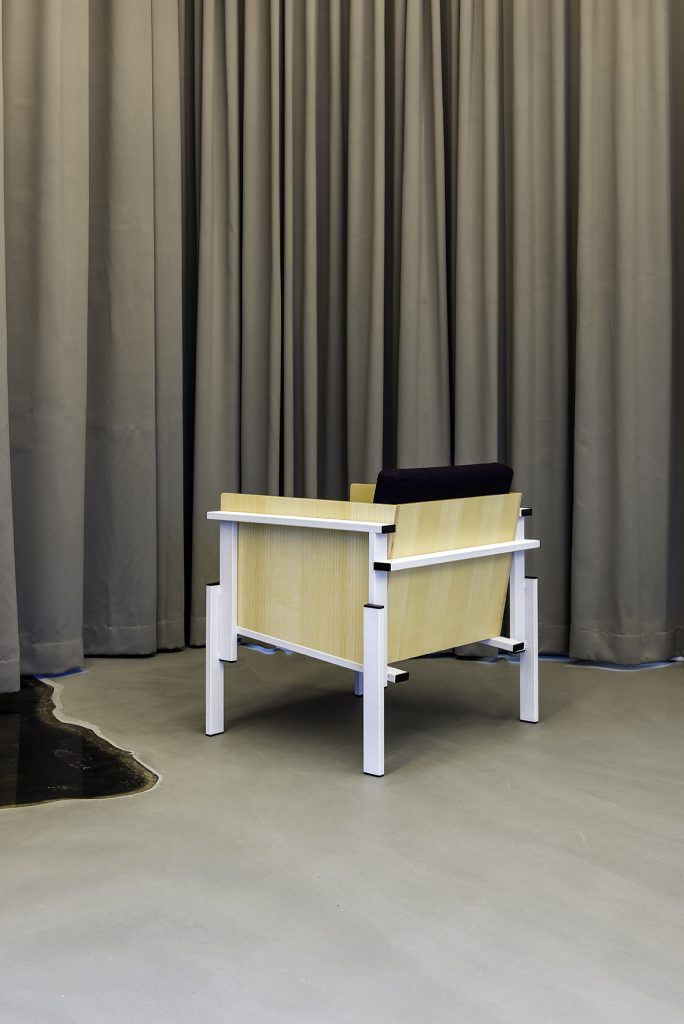-
Huck Leber
Site specific commission for Hallands Konstmsueum (the Art Museum of Halland). Aside from setting the artistic and interior framework, Nordberg also designed all the seating furniture for the new auditorium. The chair collection is based on a short story by the Halmstad-born writer Klara Johanson (1875–1948; pen name Huck Leber) from her book Oskuld och arsenik (Innocence and arsenic), published in 1901. Johanson dedicated one of the chapters to Halmstad where also the Art Museum of Halland is situated. She describes how Halmstad differs from Stockholm where she lived most of her life.
She wrote:
Man skall näppeligen bland invånarna i Stockholms nyare stadsdelar anträffa någon individ som icke är anfäktad af snufva och hosta, och detta är ju också oundvikligt när de ständig måste röra sig på oblygt öppna gator, som skära hvarandra i räta vinklar, hvararaf det naturnödvändigt uppstår ett olidligt korsdrag. En liten krökning här, en liten svängning där, en parkanläggning till vänster, en fontän till höger, och Nissens bröstkarameller skulle sjunka i pris!
I min födelsestad finna de sannerligen inte många afnämare, ty där har stadsplanen allt från början varit ägnad att afvärja förkylningar. Där skall man aldrig lyckas skåda tvänne parallella husrader, som i oändlighet draga sig fram, tills de försvinna i det blånade intet och på regelbundna distanser korsas af andra lika beskaffade rader, som förlora sig i ett likadant intet. Nej då, för det första stå inte husen så där hopkörda och hålla varandra under armen gatan utefter, utan de samla sig i smärre slutna sällskap, allt efter sina personliga sympatier, eller dra sig misstroget ifrån hvarandra med litet plank och småsaker emellan. Inte häller stå de och fåna på samma linje, utan somliga spatsera ett stycke ut på trottoaren för att se sig om och delta i världsvimlet, under det andra, som äro blygare af sig, förskrämda hoppa tillbaka och gömma sig innanför ett staket eller några popplar.Which can be translated to:
You will hardly ever find any individual who is not challenged by colds and coughing among the inhabitants of Stockholm’s newer neighbourhoods, and this is also inevitable when they have to constantly move on unobstructed open streets, which intersect at right angles, where it naturally occurs an unbearable draft. A little bend here, a little swing there, a park on the left, a fountain on the right, and Nissen’s cough drops would fall in price!
In my city of birth, they certainly do not find many venders, because there, from the beginning, the city plan has been devoted to warding off colds. There one should never be able to see two parallel house rows, which endlessly extend, until they disappear into the blue nothing and at regular distances intersected by other equally acquired rows, which lose themselves in a similar nothing. No no, firstly, the houses do not stand together like that holding each other under the arm street along, but they gather in smaller closed societies, according to their personal sympathies, or distrust each other with a little plank and small things in between. They do not pour and stand on the same line, but some walk a bit out on the sidewalk to look around and participate in the crowd, while others, who are shy of themselves, frightened jump back and hide inside a fence or some poplar .Klara Johansons description of the city planning of Halmstad in the early 1900-hundreds became the basic concept of Nordberg’s chair collection. All the different seating devices are based on steel structures that “do not pour and stand on the same line, but some walk a bit out on the sidewalk to look around and participate in the crowd, while others, who are shy of themselves, frightened jump back and hide inside”.
The rectangular shapes steel tubes in the structures of each chair are cut in unexpected ways and directions are altered. A beachy sand like coating is covering the steel frames as a reminiscence of the long white beaches of Halland. -


